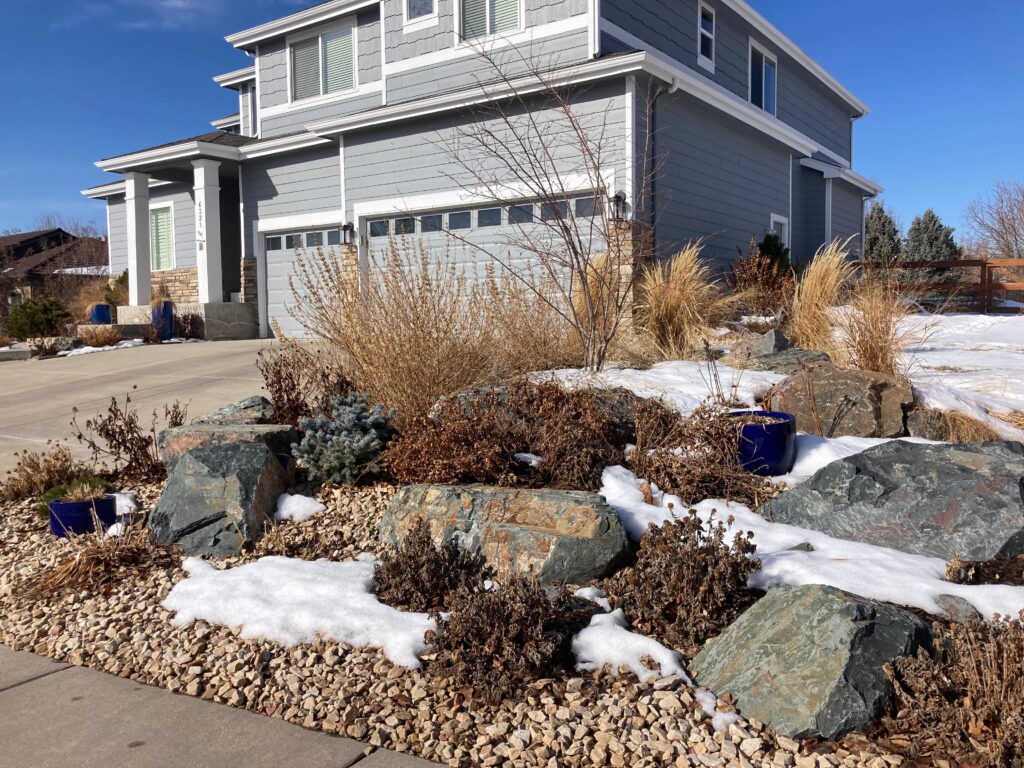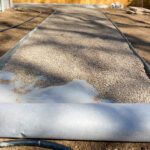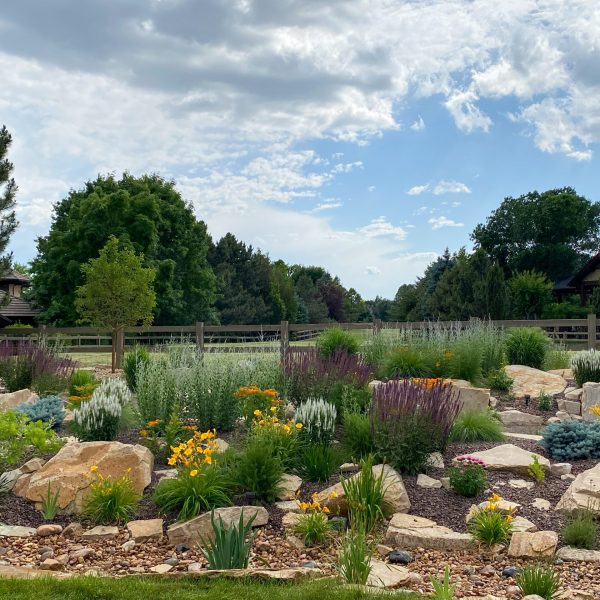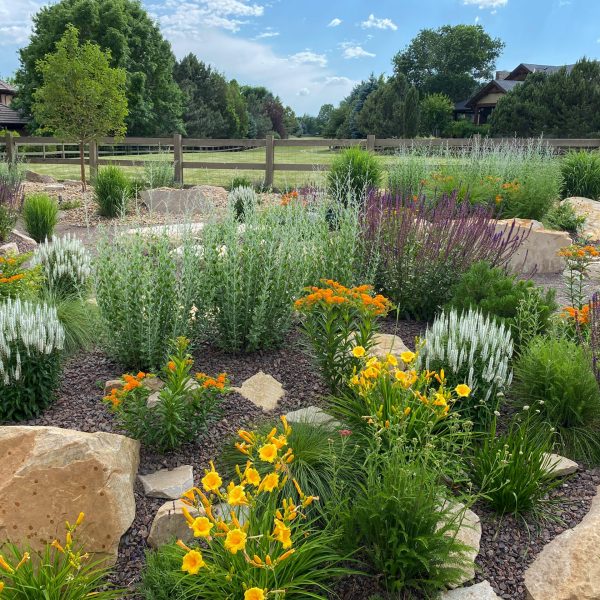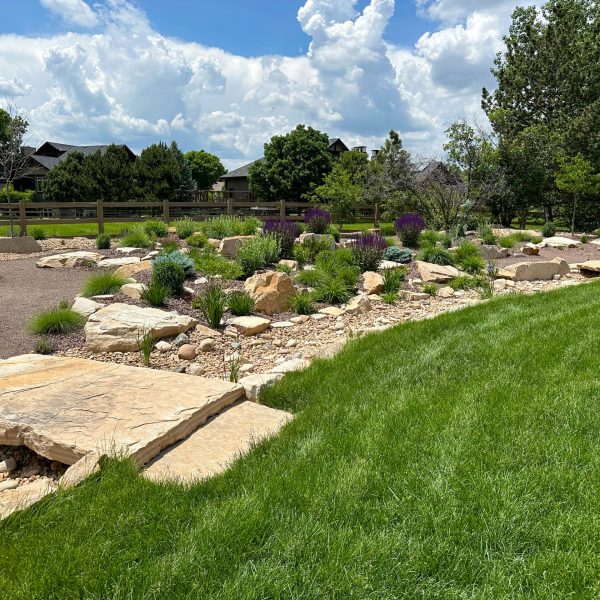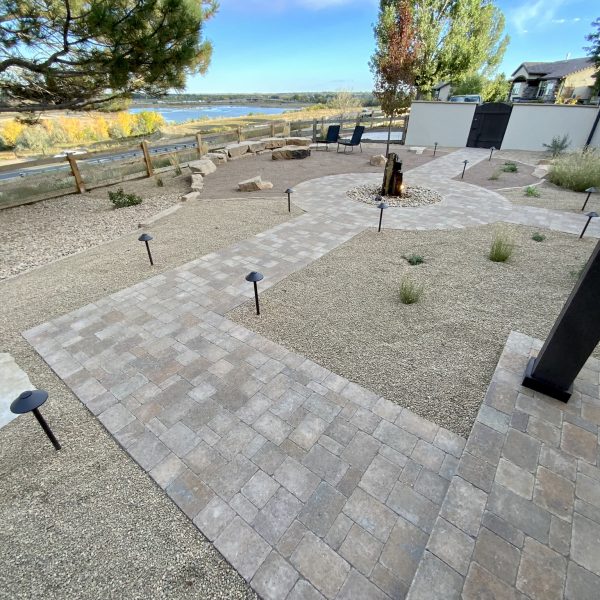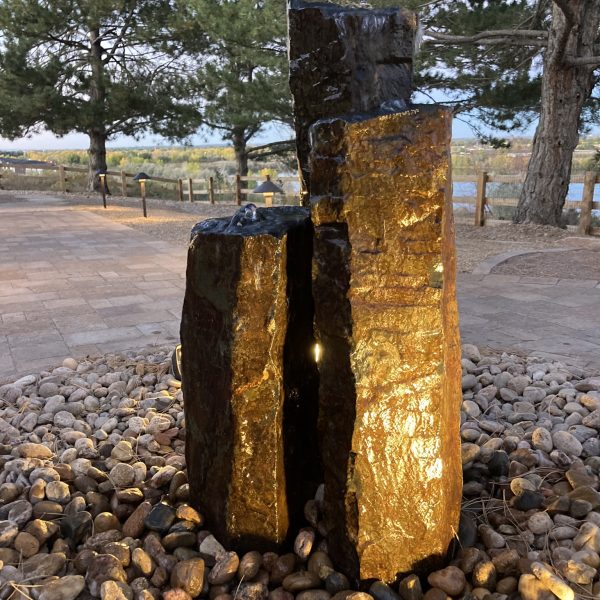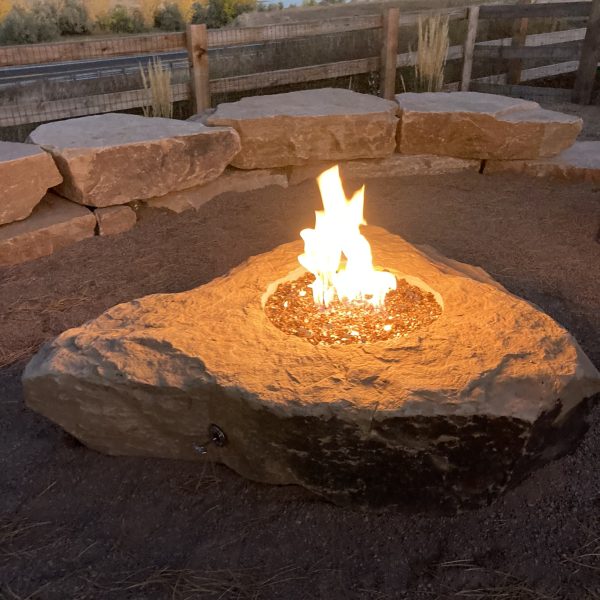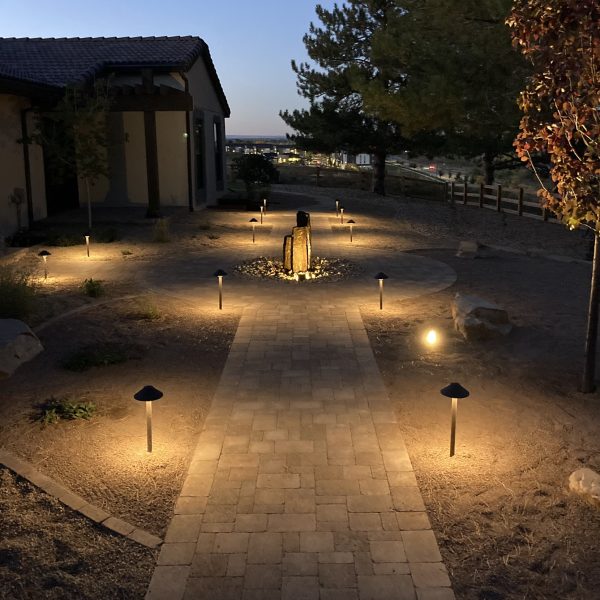If you’re from the Front Range region of Colorado or have lived here for some time, you’ve probably experienced the effects of our arid climate: chapped lips, cracked heels, and desert-dry hands. The lack of moisture in our state is no joke. Chances are, you’re not the only one that’s feeling parched and withered during winter. Your plants are begging to be watered!
Winter watering–to do it or not to do it? This question arises for a lot of homeowners. There can also be the tendency to forget about our plants during colder months, or to assume that dormancy means no watering. We’re here to set things straight. Winter watering is an effective and important aspect of maintaining healthy plants in a Colorado landscape. If you’re from other parts of the country, the idea of winter watering can sound ludicrous, but it’s the reality of living and growing plants in our beautiful, dry state.
Supplemental watering during the fall and winter months is going to be a solid form of defense against drought injury in plants. While Colorado’s vast topography yields a variety of elevations and climatic conditions, the Front Range tends to remain relatively dry with little precipitation, low soil moisture, and vast temperature swings. Additionally, we are experiencing the impacts of climate change and rising temperatures. This has ramifications on the snowpack and hydrology of our entire state. Being a plant in these unique Colorado conditions can be tough! Luckily, proper watering practices (and water management) in our landscapes is one step that will set our plants up for success.
Even with proper mulching, extended periods of drought from October through March may leave plants with a higher susceptibility to drought injury and root damage. This can compromise plant health and, in severe cases, result in plant death. Aside from a handful of Colorado natives, most vegetation with shallow root systems, particularly woody plants, will suffer winter damage without supplemental watering. While drought injury can leave visible impacts in the spring, affected plants may also be deceiving, presenting healthy right off the bat. However, with an injured root system, a plant will quickly go through its food storage reserves until it is no longer able to uptake any more water or nutrients, leading to plant death.
There’s nothing more painful than pouring time, money, and hard work into a newly installed landscape, only to suffer plant casualties that could have been prevented. Because they’re more susceptible to drought damage, newly established plants and turf are extra important to water during winter months. Susceptibility to drought injury increases with windier and Southwestern exposures. Proper mulching can help with moisture retention, as exposed soil areas will expand and contract with swinging temperatures, leaving roots vulnerable to exposure and injury. Water application will also be dependent on seasonal precipitation. The more snowfall, the less watering you’ll need to do.
So, maybe you’re reading this and feeling the panic set in. You haven’t watered once this winter. We’re here to assure you that it’s okay, and it’s never too late to start! When we begin to have a deeper understanding of our unique ecosystems and climate, we foster a greater awareness on how to better manage and nurture the landscapes we love. So, where does one begin? An excellent resource and landing point is going to be the Colorado State University Extension Fact Sheet 7.211. As a rule of thumb, you should aim to water your plants once to twice a month, depending on snowpack and drought periods. Keep an eye out for those sunnier 40°F days, and make sure to water in the afternoon.
When it comes to how much supplemental water we give our plants, there’s going to be a lot of factors in the mix. However, a safe place to start is by offering newly established shrubs two gallons of water, twice a month. For larger and more established shrubs (>6’ wide), you’ll bump that average up to eighteen gallons of water per month. For trees, you can safely assume that for every inch of caliper, you’ll need to deliver 10 gallons of water. Be conscious to slowly soak that area so the first 12” of soil becomes moist. Remember, a tree’s root system will, on average, have a spread at least twice the size of the canopy, so you’ll want to water accordingly. Watering directly at the base of a tree’s trunk is not an effective method and could cause potential damage. Be sure to give some attention and hydration to your perennials and turf, as well. Come springtime, your plants will be thanking you with gifts of new growth and blooms.
As we mentioned in our first blog post, we are blessed with over 300 days of sunshine here in Colorado. There are plenty of opportunities for landscape maintenance and health. It’s time to put your jacket on and grab the hose; the great outdoors is waiting. Quench your thirst for life and enjoy your best landscape with a little hydration. After all, none of us would even be here without water; all living organisms would simply cease to exist. So, let’s give it up for H20, the real MVP. We won’t forget about you this winter.
As always, we love that you’ve landed on our page. Thanks for joining us for another week at the Backyard Blog. Happy watering, and don’t forget to drain and roll those hoses up after each use.
See y’all next week, KALEIDO-Crew.
Warmly,
KALEIDOSCAPE


